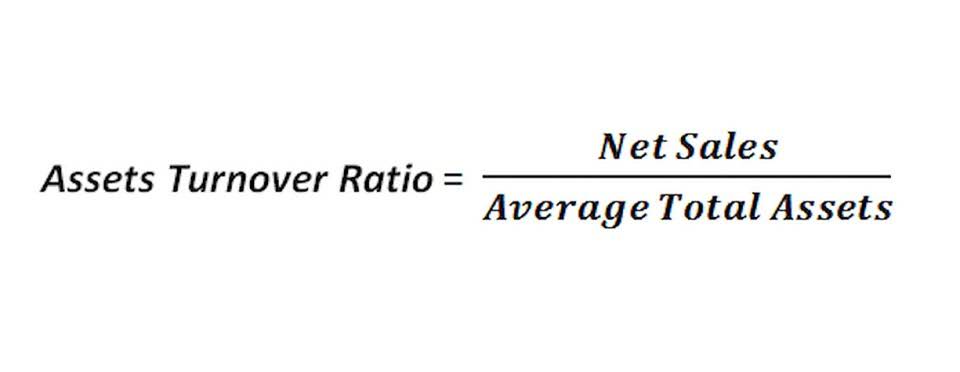Your cart is currently empty!
Blog
How To Become A Project Manager: A Step-By-Step Guide
In the end, your product’s success is based on your ability to go beyond the tactical work you do on a daily basis and create a Complete Product Experience. Product management careers are excellent because they combine creativity, problem-solving skills, and leadership abilities. When completing your own project, designing and prototyping a Project Product Manager job product is one option.
Apply for your first product management job (or go for an internal transfer)
If it makes sense to do so, approach your manager with ideas of how you can contribute and let them know you’re interested in developing project management experience. Some may study project management principles in school and apply directly to project management positions after https://wizardsdev.com/en/vacancy/ios-developer/ graduating. In contrast, others “accidentally” become project managers after gradually taking on more responsibilities in their current roles or switch from seemingly unrelated fields. Whatever path you hope to take, consider these six steps when exploring how to become a project manager. Online learning platforms like Coursera, edX, and Udemy offer product management courses from top universities and industry experts.
Overall Company Culture
Product Development & Systems Engineering uses a structured yet flexible approach to provide a holistic, solid foundation to the successful development of complex products or systems. We offer a 12-week facilitation certification program to help you develop the skills you Coding and your team need to facilitate transformative meetings, drive collaboration, and inspire innovation. A variety of companies across different industries hire Product Managers to drive product development, innovation, and growth. Building customer empathy should always be at the heart of your decision-making process. Balancing a long-term vision with the ability to pivot when necessary ensures you stay relevant and effective in your role. Strong communication is the glue that holds cross-functional teams together.
- You can better understand consumer behavior and how to develop goods that satisfy client wants by earning a degree in psychology or sociology.
- After launch, product management guides the product through maturity and to the end of the product life cycle.
- These requirements ensure that aspiring professionals have the education, skills, and experience needed to lead projects effectively and achieve success in this role.
- By staying organized and prioritizing effectively, you can manage your workload efficiently and lead your team to achieve great results.”
- After working as a software engineer for a decade, I decided to transition into product management.
- Their responsibilities may also include quality assurance, risk management and financial analysis, and they must be able to communicate proficiently both internally and externally.
Product Manager
Drawing on their expertise in data science, data product managers gather and analyze information from various sources such as testing, market research and consumer surveys. Their daily responsibilities typically involve meeting with development, sales and marketing teams, analyzing usage data and carefully tracking development progress to ensure it aligns with the product roadmap schedule. You’ll find that there’s a lot of overlap between the paths of project and product managers. Product managers and project managers both work to steward a larger initiative from beginning to end, but the focus of their efforts—and the skills they need to do their job—tend to differ.
How to Become a Product Manager: A Step-by-Step Guide
They lead junior-level product managers and often oversee more complicated, higher-profile product launches. They are also the liaison between that team and the organization’s upper management. Growth product managers may oversee their companies’ product growth process, which includes acquiring new customers and retaining existing ones.
- Online education platforms and universities provide a range of courses covering the fundamentals of product management, from ideation to launch and beyond.
- Educative has also created customized learning paths for engineering manager interview preparation, which can be highly beneficial for engineers aspiring to advance to higher positions.
- They also act as liaisons who provide clients updates on project statuses and make sure they are satisfied with the quality of the work.
- Perhaps one of the most commonly known project management certifications, the Project Management Professional certification, provided by the Project Management Institute (PMI®), sets the standards for project management.
Whatever order you prioritize, always prioritize what is best for the customers and the business. Communication is critical – communicating, in this instance, with different teams regarding the product requires a lot of clear direction to ensure that everyone is on the same page. The time it takes to become a Project Manager depends on your educational background and work experience. With the right education, it could take 3 to 5 years to gain the necessary skills and experience. Adding certifications and specialized training can accelerate the process and improve your career prospects in how to become a project manager.
Product owner vs. product manager vs. project manager
The Product Manager Certification taught by The Product School is geared towards those looking to kick-start a career in the field without any prior experience. The prospect of networking can feel intimidating—especially if you’re brand new to the field and don’t have a natural “in”. But there are many ways to get started, and not all of them involve crowded rooms and awkward conversations.
Uncovering the Benefits of Consolidation

This method combines all the subsidiary’s revenues, expenses, assets, and liabilities with the parent company’s financial statements, creating a comprehensive set of consolidated financial statements. The decision to file consolidated financial statements with subsidiaries is usually made annually and is often chosen because of tax or other advantages. The criteria for filing a consolidated financial statement is primarily based on the amount of ownership the parent company has in the subsidiary. Companies that don’t include their subsidiaries in their reporting usually account for their ownership using the cost method or the equity method. It exercises control over its subsidiaries, sets the accounting rules and methods for consolidation, and ensures that the financial statements adhere to GAAP and/or IFRS. The parent company’s financial statements serve as the foundation for the consolidated financial statements, and it is responsible for eliminating intercompany transactions to avoid double-counting.
- Both of these companies will issue their financial statements separately.
- This method is often used in cases where the subsidiary’s activities are substantially different from the parent company’s primary business.
- Improved compliance is an essential benefit of account consolidation as it helps organizations meet the specific requirements set by governing bodies such as the Financial Accounting Standards Board (FASB).
- Our product roadmap is shaped directly by research into our customers’ deepest challenges and emerging needs.
- The private company has less requirement in preparing the financial statement while the public company needs to comply with many regulations such as IFRS, SEC, and other local guidelines.
What Is a Consolidated Balance Sheet and How Is It Prepared?

The consolidation is important for a group to present its group-wide financial situation in a transparent manner. Banks can also get a better picture of the group’s financial situation when granting loans. Pete and his team will often co-ordinate with our Onboarding team to ensure customers have business critical integrations up and running from day 1. Customers often come back to us post go-live because they want to integrate another system with their AccountsIQ platform. Accounting software integrations give you a seamless flow of information from one system to another. This real-time data sharing across the business is one of the best ways to stay competitive.
Comprehensive Wholesale Digital Infrastructure Solutions

Consolidation requirements are determined by Generally Accepted Accounting Principles (GAAP) and International Financial Reporting Standards (IFRS). Under GAAP, if a parent company owns more than 50% of another company’s voting stock, it must consolidate the subsidiary; however, under IFRS, this threshold can vary between 20-50%. The development of software designed explicitly for consolidations is a testament to how important this concept has become in the financial sphere. Ultimately, consolidation is an essential tool that businesses use today for its accuracy and ease of use when dealing with large amounts of data. Consolidation is a concept used in many industries, including accounting.

How your finance team can get started
- Our solution ensures you have access to the latest technology and features while also providing substantial time savings and reducing costs.
- Companies incur foreign exchange risk when they engage in financial transactions in a currency other than their domestic currency.
- The report argues that companies are looking to hire personnel from outside high-cost countries, such as Argentina and India, due to the demand for talent and the shortage of candidates for certain vacancies.
- Increased accuracy, minimised riskNumbers don’t lie—but human error is a fact of life.
- Berkshire Hathaway (BRK.A/BRK.B) is a holding company with ownership interests in many different companies.
Consolidated financial statements play a crucial role in providing a unified financial snapshot of a group of companies under common control. They allow stakeholders, including investors, regulators, and management, to assess the overall performance, financial position, and cash flow dynamics of the entire group. Understanding consolidated financial statements is essential for evaluating the financial health and strategic direction of multi-entity organizations. The consolidated financial statements are a combination of the parent company’s financial statements and those of its subsidiaries.
The companies or the subsidiaries, dealing or operating all across the globe must follow the IFRS rules while recording and maintaining the consolidated financial data. The first step is to identify the subsidiary entities that need to be consolidated. A subsidiary is a company controlled by another entity, known as the parent company. Consolidation is the bringing together of all financial statements of affiliated companies within a group. It is important in order to present the overall financial situation of the group in a transparent way. Here we show you what consolidation involves, how it is done and what it means for companies.
Empowering Your Team with AccountsIQ: Award-Winning Onboarding and Support
- Group accounts report the underlying commercial reality of the effective control of the parent.
- In addition, it has a better overview of its debts because it only has to repay one loan and not several.
- Private company usually prepare non-consoliate financial statement due to its simple structure.
- This avoids group accounts showing misleadingly high levels of activity or assets.
So, if Company 1 has revenues of $200 million and Company 2 has revenues of $80 million, Company 1 would have $240 million. Once we have identified that significant influence exists, we do not consolidate line by line like we do for a subsidiary. Had the question asked for the consolidated cost of sales figure, the next step would have been to identify the provision for unrealised profit (PUP). Note that although we refer to this as a provision, consolidated account meaning it is not a liability but an adjustment to the asset, inventory. Purple Co has made a profit of $1,000 (calculated as revenue of $5,000 – cost of $4,000). As only half of the items remain in inventory, the inventory value is overstated by half of that profit – that is, $500.
Application and Methodology

A parent company and its subsidiaries generally use the same financial accounting framework for preparing both separate and consolidated financial statements. Consolidation is essential in accounting because it allows entities to present their financial data as a single entity rather than separate entities. It simplifies reporting and analysis, making it easier for stakeholders to understand https://www.bookstime.com/articles/what-is-petty-cash the organization’s financial position.

It is a representation of how the holding company is doing, as a group. Holdco recording transactions and Sub’s individual assets and liabilities today are set out above, together with the consolidated group figures. The consolidated group statement shows that the Holdco group controls a much larger amount of assets (£204m) than the individual accounts of Holdco might suggest (only £4m). The group is also more heavily indebted than Holdco’s individual accounts disclose.
Contribution Margin Calculator

Expressed as a percent, it is the portion of total sales revenue that became profit after deducting the cost to develop each individual product sold. The contribution margin formula is calculated by subtracting total variable costs from net sales revenue. The contribution margin can be calculated by subtracting variable costs from sales revenue or by dividing the contribution margin per unit by the selling price per unit.

Breakeven Analysis
These examples demonstrate how this concept is applicable across a wide range of industries and can be an essential tool in pricing decisions, cost control, and profitability analysis. It’s important to be aware of these limitations when using contribution margin in business decision-making. Companies should supplement it with other financial and non-financial metrics to make comprehensive and well-informed decisions. Proportion in sales of each product is worked by dividing the product sales by total sales, i.e. $16,000,000 divided by $21,750,000 equals 73.56%. The profitability of our company likely benefited from the increased contribution margin per product, as the contribution margin per dollar increased from $0.60 to $0.68. On the other hand, the gross margin metric is a profitability measure that is inclusive of all products and services offered by the company.
Marine Engineering

This calculation reveals the sales target where total revenues equal total costs, resulting in neither profit nor loss. The contribution margin should be relatively high, since it must be sufficient to also cover fixed expenses and administrative overhead. Also, the measure is useful for determining whether to allow a lower price in special pricing situations. If the contribution margin ratio is excessively low or negative, it would be unwise to continue selling a product at that price point, since the company would have considerable difficulty earning a profit over the long term. The ratio is also useful for determining the profits that will arise from various sales levels (see the following example). The contribution margin ratio is used by finance professionals to analyze a company’s profitability.
Contribution Margin Calculator — Excel Template
The CM ratio is a useful tool for managers when making decisions such as setting sales prices, selecting product lines, and managing costs. It is also used in break-even analysis and to measure operating leverage. Breakeven sales level (in units) for each product equals the product breakeven sales divided by its price, i.e. $3,695,538 divided by $80 works out to 46,194 units of cricket shoes. Knowing how to calculate contribution margin allows us to move on to calculating the contribution margin ratio. To get the ratio, all you need to do is divide the contribution margin by the total revenue.

The greatest common factor is the largest number that can be cm ratio is equal to 1 – ratio. evenly divided into both the numbers on the left and right sides. Calculate, simplify, scale, or compare ratios using the ratio calculator below. The contribution margin is given as a currency, while the ratio is presented as a percentage.

AccountingTools
This means 40% of each sales dollar is available to cover fixed costs and profits. While the recording transactions contribution margin ratio is a percentage, actual contribution margin dollars increase with higher unit sales if the ratio remains constant. Selling more units generates greater total contribution margin dollars, which can cover fixed costs and boost profitability.
- The contribution margin ratio is the difference between a company’s sales and variable expenses, expressed as a percentage.
- The difference between fixed and variable costs has to do with their correlation to the production levels of a company.
- The contribution margin (CM) is the profit generated once variable costs have been deducted from revenue.
- Breakeven sales level (in dollars) for each product is calculated by multiplying total breakeven sales with the proportion (weight) of each product in total sales, i.e. 73.56% of $5,023,622 equals $3,695,538, etc.
However, this strategy could ultimately backfire, and hurt profits if customers are unwilling to pay the higher price. Below is a break down of subject weightings in the FMVA® financial analyst program. As you can see there is a heavy focus on financial modeling, finance, Excel, business valuation, budgeting/forecasting, PowerPoint presentations, accounting and business strategy. Alternatively, it can also be calculated by multiplying the Contribution Margin Per Unit by the total quantity of units sold. Then, compare the decimal values to determine if the ratios are equal or if one is larger than the other.
What is a Centimeter?
In addition to mathematics, ratios are used in financial calculations, for instance when comparing someone’s debt-to-income (how much you owe to how much income you have). Ratios are also used in in photography or video applications for comparing aspect ratios or even architecture and engineering to scale dimensions. Furthermore, ratios can be used for things like the lottery to express the odds of winning. Aside from the uses listed above, the contribution margin’s importance also lies in the fact that it is one of the building blocks of break-even analysis.
Fixed Cost: What It Is & How to Calculate It
It is the point at which a company breaks even, i.e. its total costs equal total sales. In accounting, contribution margin is the difference between the revenue and the variable costs of a product. It represents how much money can be generated by each unit of a product after deducting the variable costs and, as a consequence, allows for an estimation of the profitability of a product. The Bookkeeping for Etsy Sellers contribution margin is the foundation for break-even analysis used in the overall cost and sales price planning for products.